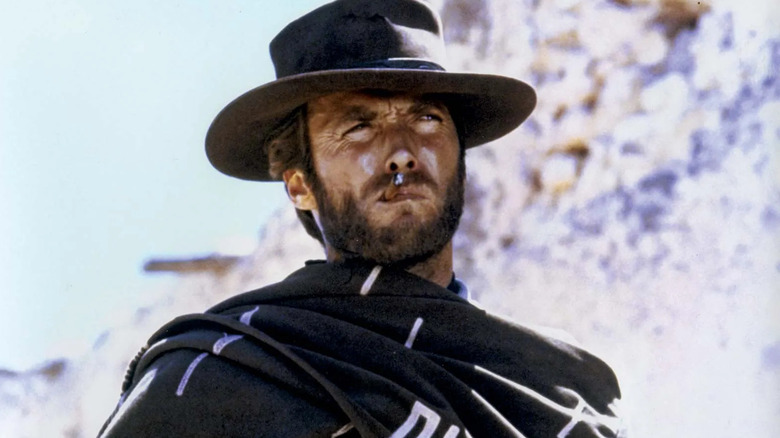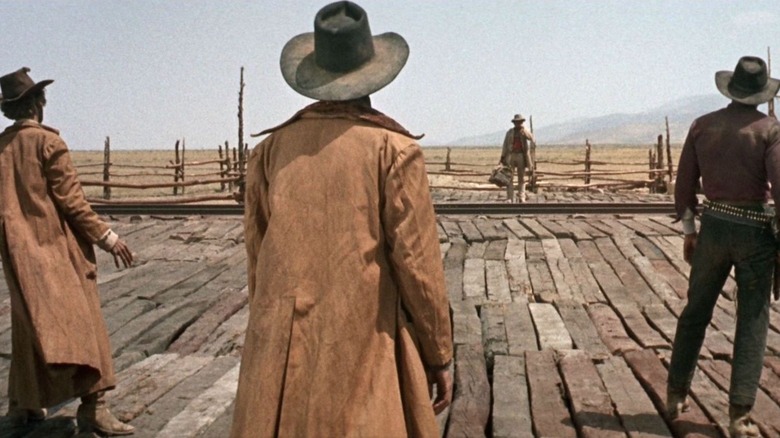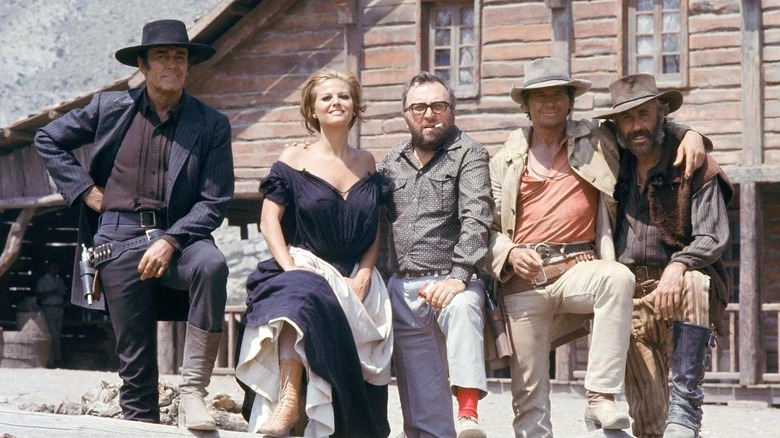How Sergio Leone's Westerns Rewrote The Rules Of Filmmaking
If you love Westerns, you owe Sergio Leone a great deal of thanks. Leone was instrumental in bringing the spaghetti Western to prominence in America and even popularized a number of its tropes, including tension-laden shootouts and the demythologization of the cowboy figure. Leone's work, which includes the "Dollars" trilogy and the "Once Upon A Time" series, even led to some significant changes in how films were shot and edited, especially in America.
Tonino Delli Colli, the cinematographer on Leone's "Once Upon A Time In The West", was interviewed for the book "Once Upon A Time In The West: Shooting A Masterpiece," which serves as an in-depth look at the making of the classic Western. According to Delli Colli, it was hard to get Leone to leave the set because of his perfectionist tendencies. Those tendencies led to extremely lengthy days on set, with Leone refusing to leave until he got the scene he was shooting just right.
Don't throw away your shot
Part of the lengthy filming schedule was due to filming in Spain, with Delli Colli revealing that the long production days (and, unfortunately, the lack of overtime pay bonuses) allowed Leone to film for as long as he wanted. Acknowledging that not all of the ways in which Leone broke Hollywood's rules were necessarily good, Delli Colli recalled:
"The one problem about working with him was that he would never leave the set until he had completely finished what he was doing. We worked sometimes for 14 to 15 hours a day. Each day was filled to the brim! In America, those extra hours would have been well paid, but not with us. There were sometimes discussions about the long working hours. They consisted of Sergio saying, 'Bugger off — we'll continue till I am ready.'"
Leone would also shoot multiple takes until he felt a scene was perfect, adding to the already lengthy hours. But this wasn't a problem for the cast; stars Henry Fonda and Charles Branson were more than game to work with Leone — and so was Robert de Niro, who ended up being the lead in Leone's follow-up film "Once Upon A Time in America".
Watch the screen, not the clock
Nowadays, movies like "Avengers: Endgame" and "The Batman" are able to use their lengthy running times almost as a selling point, with three-hour movies carrying an inherent promise of something truly epic. However, this wasn't always a popular trend. Colli also discussed how the cuts of Leone's films different depending on where they were released, and he wasn't exactly fond of the editing job done in the American version:
"Sergio's films took 13, 14 weeks — but they were really 'double films' because they were three to three and a half hours long, then he would cut a little...! For instance, '[Once Upon a Time in] America' was ruined by the Americans. In Europe, everyone saw the real film. In America, they ruined it, cut all the flashbacks and turned it into a 'filmetto' ... The Americans certainly didn't help Sergio — like they don't help European cinema. Same with 'Once Upon a Time in the West.' You had to see the real film in Italy or France. "
Leone's director cut was eventually released on home video, allowing viewers to watch "Once Upon A Time In the West" the way its filmmaker intended. Leone is hardly the first filmmaker to see his work truncated by studios; it's even become a common practice over the years to see alternate cuts of certain films. But at least now you can watch those films from the comfort of your house; no travel to Europe needed!


